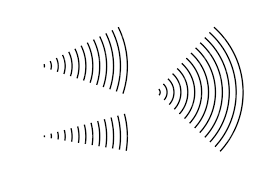Sound generation is a fascinating and evolving aspect of the modern world, with applications ranging from music production to entertainment and beyond. This intricate process involves the creation and manipulation of sound, allowing us to explore a wide range of auditory experiences. In this 1000-word essay, we will explore the fundamentals of sound generation, its historical context, contemporary applications, challenges, and the profound impact it has on our lives.
The Fundamentals of Sound Generation
At its core, sound generation is the art and science of producing audible vibrations in the form of sound waves. These sound waves propagate through a medium, typically air, and are perceived by our ears as audible sounds. The most fundamental element in sound generation is the creation of vibrations, which can be achieved through various means, including:
- Acoustic Instruments: Traditional instruments like pianos, violins, and flutes create sound through the vibration of physical elements like strings, reeds, and air columns. The musician’s interaction with the instrument produces these vibrations.
- Electronic Instruments: Synthesizers and electronic keyboards generate sound through the manipulation of electrical signals, often employing oscillators, filters, and modulators to produce a wide array of sounds.
- Digital Sound Generation: In the digital domain, sound generation involves the use of computers and software to create and manipulate sound waves. This process often includes the use of virtual instruments, digital synthesizers, and sample-based instruments.
Historical Context of Sound Generation
Sound generation has a rich history, evolving in parallel with advancements in technology:
- Ancient Instruments: Early humans created sound using basic instruments like drums, flutes, and voice. These instruments relied on physical actions to produce sound.
- Acoustic Era: The development of classical instruments, such as the piano, violin, and brass instruments, marked the beginning of the acoustic era in sound generation.
- Electronic Era: The 20th century brought about a significant shift in sound generation with the advent of electronic instruments. The Theremin, invented in 1919, was one of the first electronic instruments to use oscillators to produce sound.
- Digital Revolution: The digital era, starting in the mid-20th century, introduced electronic synthesizers and samplers, revolutionizing sound generation. Computers became integral in creating and manipulating sound.
Applications of Sound Generation
Sound generation finds applications across a wide spectrum of fields:
- Music Production: Sound generation is fundamental to music creation, where musicians, composers, and producers use various instruments and technology to produce a diverse range of sounds, from orchestral compositions to electronic dance music.
- Film and Video Game Soundtracks: Soundtracks in film, television, and video games rely on sound generation to create immersive auditory experiences. This includes creating mood-enhancing background music and realistic sound effects.
- Sound Design: Sound designers use sound generation techniques to create custom sound effects for various media, including movies, animations, and video games. They craft sounds that bring visual elements to life.
- Virtual Reality (VR): In VR experiences, sound generation plays a vital role in creating a sense of presence and immersion. Realistic audio cues are essential to transport users to virtual worlds.
- Audio Advertising: Sound generation is a key component of audio advertising, helping to create memorable jingles and catchy soundscapes that stick in the minds of consumers.
Challenges in Sound Generation
Sound generation comes with its own set of challenges:
- Realism: Achieving a high level of realism in sound generation can be challenging, particularly when trying to replicate complex and subtle real-world sounds.
- Integration: As sound generation technology evolves, integrating different hardware and software systems can be complex. Ensuring compatibility and efficient workflow can be a hurdle.
- Data Storage: High-quality sound generation often requires a significant amount of data storage and transmission bandwidth. Efficient data management and distribution are essential for large-scale audio projects.
- User Interface Design: Creating user-friendly interfaces for sound generation software and hardware is an ongoing challenge, as they must cater to both beginners and advanced users.
Impact of Sound Generation
Sound generation has profoundly impacted various aspects of our lives:
- Entertainment: Sound generation enriches the entertainment industry, enhancing the audio experience in music, movies, video games, and live performances.
- Immersive Experiences: In virtual reality and augmented reality, sound generation contributes to a sense of immersion, making digital experiences more lifelike.
- Emotion and Storytelling: Sound generation can evoke emotions, set moods, and enhance storytelling, making it an indispensable component of media and art.
- Accessibility: Sound generation technology has contributed to the accessibility of information and entertainment for individuals with visual or hearing impairments, enhancing their engagement with digital content.
- Scientific Research: Sound generation is vital in scientific research, where realistic audio cues are used for experiments and studies, particularly in fields like acoustics, psychology, and neuroscience.
Access the link https://texttosound.com/about-
Conclusion
Sound generation is a dynamic field that continues to evolve, pushing the boundaries of what is musically and artistically possible. From the earliest human-created sounds to the sophisticated instruments and technologies of today, sound generation has woven itself into the fabric of human creativity and expression.
As technology continues to advance, the future of sound generation holds exciting prospects, promising new avenues for artistic expression, improved audio experiences, and a deeper understanding of the role sound plays in our lives. Sound generation is not just a tool; it is an art form that bridges the gap between the digital and the emotional, creating sonic landscapes that resonate with our senses and souls.
